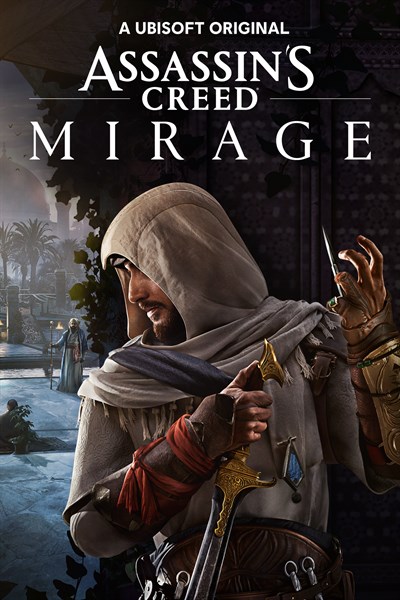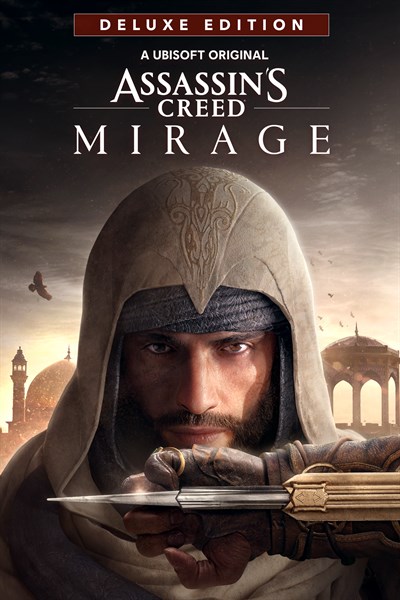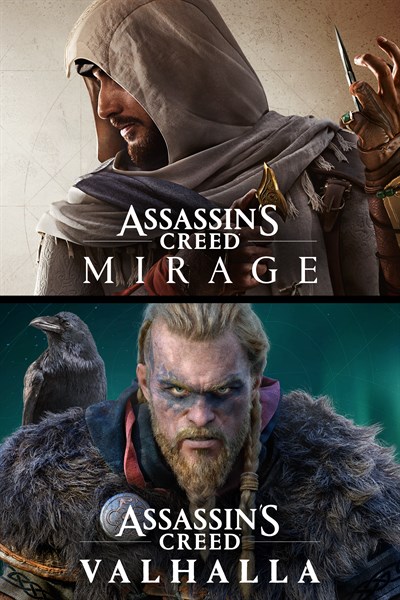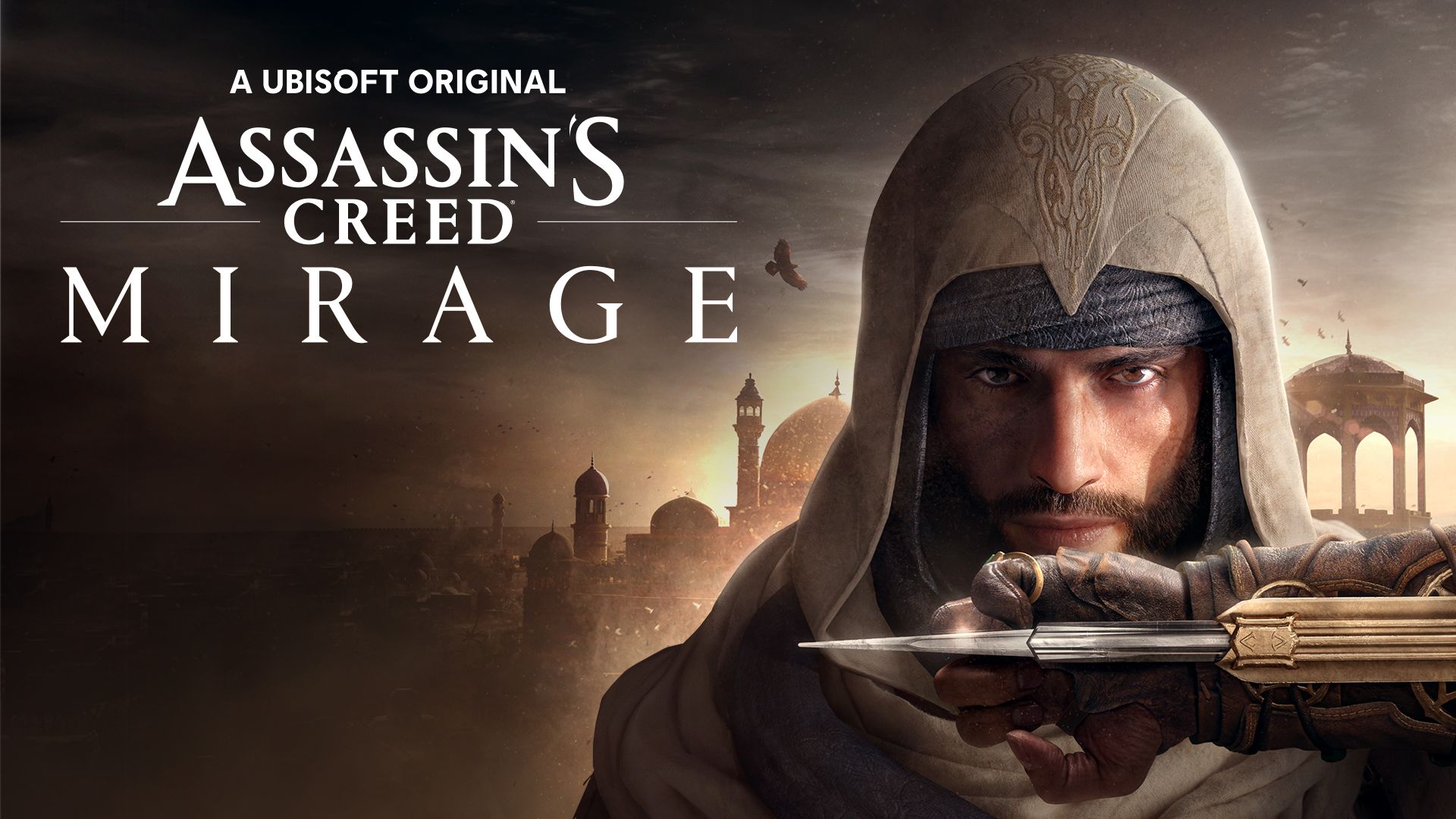
Assassin’s Creed Mirage is out now on Xbox One and Xbox Series X|S, and ninth-century Baghdad is yours to explore as Basim Ibn Ishaq, a young street thief who grows into the role of a master Assassin. As a member of the Hidden Ones (who will eventually become known as the Assassins), Basim will set out from secret Bureaus around the city to investigate shady activities and follow increasingly dangerous leads, eventually taking on big, open Black Box assassination missions that challenge players to use their skills and environment to identify, locate, and take down targets.
It’s an approach that echoes the structure of the very first Assassin’s Creed, and Assassin’s Creed Mirage is in many ways a deliberate return to the series’ roots. In addition to bringing the story back to the Middle East and letting players embody an initiate in the Hidden Ones, Assassin’s Creed Mirage takes concepts and tools from the early games in the series and revitalizes them with modern gameplay sensibilities and greater depth. For example, Basim can unlock familiar weaponry, including explosive traps and noisemakers, blowguns, and throwing knives, and can now customize them with a selection of buffs like poison and bonus damage. Assassin’s Creed Mirage also puts a big emphasis on stealth; while Basim is capable with his sword and dagger, groups of enemies can quickly overwhelm him, meaning that fighting should be his last resort if hiding and running fail.
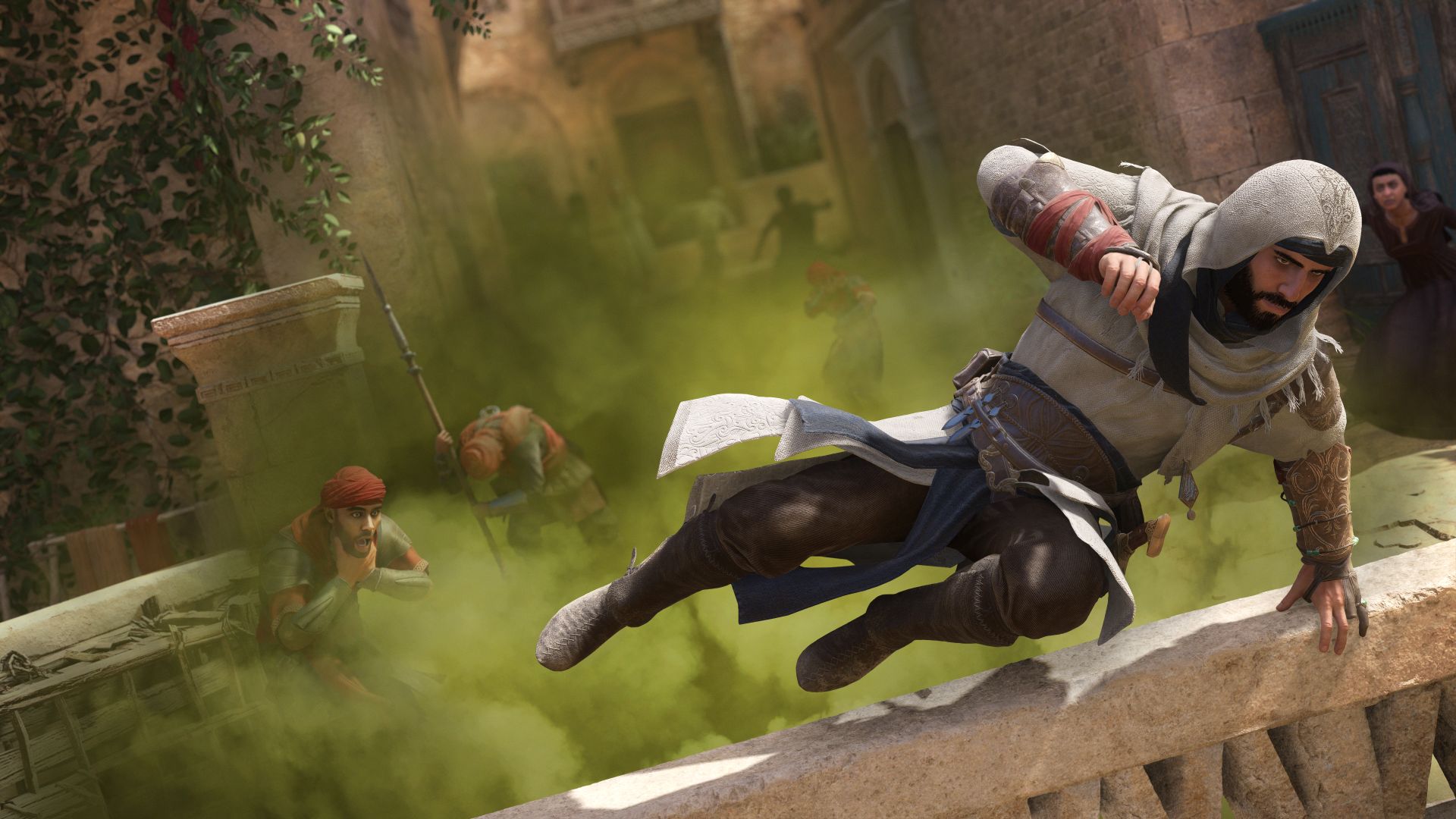
To find out more about how Assassin’s Creed Mirage’s approach came together, we spoke with Creative Director Stephane Boudon about revitalizing the series’ roots, the feelings the team wanted the game to evoke, and the lure of a good investigation.
Assassin’s Creed Mirage has been touted as a return to the series’ origins, bringing everything full circle before the series embarks on something new. How did that idea take shape? What was the initial vision for the game, and how did its scope change over the course of development?
Assassin’s Creed Mirage started as an Assassin’s Creed Valhalla DLC on paper for a few weeks. After a first pitch, we were pleased to see that the reception was great, and we decided to move to a standalone game. Only the main pillars of the game remain from that very first pitch: Becoming an Assassin, the immersive city, and the impactful journey. But the location, the main character, the global historical context, and the first draft of story pitch have been reworked.
During this shift, we started to look more closely at Baghdad and quickly drew connections with Basim’s past. Then the pieces started fitting together: The historical context and its many historical figures encompassed a period of turmoil, with the Anarchy at Samarra teasing the incoming Zanj Rebellion later. It was the perfect material to build the pivotal moment we needed to bring the conflict to a high level.

Was the return to the series’ roots in part to address fan requests for an experience closer to the earlier games?
Partially, yes; we were aware that a part of our community was asking for a more condensed scope, and with the Assassin fantasy in mind, many of us on the development team were among them. But we also wanted to cook up something special for the 15th anniversary of the franchise: an ode to the very first Assassin’s Creed games.
Of course, this was a perfect match for us at Ubisoft Bordeaux, in terms of scope and production capacity. An opportunity of a lifetime for a relatively new studio!

How did you settle on which elements to include? For example, Mirage brings back wanted posters for players to tear down; eavesdropping from nearby hiding spots; and explosive traps, to name a few. How did you decide what made the cut? Was it necessary to modernize or otherwise adjust them for new audiences?
We didn’t really work like that; in fact, we never had any list of features to bring back. We only worked with a strong fantasy in mind, and the many experiences that we wanted to relive. Most of the time, like the creators before us, we crossed the same paths.
For instance, when we created the Notoriety system, we wanted a way to decrease it. To achieve this, we wanted something immersive, something that brings the city to life, and something you can witness. Of course, we were fondly inspired by the past games, and naturally the wanted-posters feature came up. It ticked all the boxes we wanted to reach, and on top of that, it was a nice throwback to Assassin’s Creed II – but most importantly, we made sure it serves an actual purpose in Assassin’s Creed Mirage.
Same goes with the other features you mentioned: hiding spots for the vanishing loop, eavesdropping for unlocking clues in the investigation system, or the trap as tactical tool to execute your stealth strategy. The design of each of these throwback features is always brand-new and relevant to our systems; we developed and integrated them because we needed them to support the vision. And I think this is one of the strengths of Mirage: Players will never encounter extraneous features or content. Everything is here to contribute to an experience or a specific emotion.

The game’s structure is strongly reminiscent of the very first Assassin’s Creed, where players conduct investigations that gradually lead to a big, elaborate assassination, with return trips to a Bureau in between. Obviously, Basim’s investigations are much more elaborate and involved than the side tasks Altaïr performed in the first game, but how was it decided to return to that structure? How did you approach it initially, and what were you hoping to recapture with it?
The overall game structure of Assassin’s Creed Mirage is classic but efficient. It follows the journey of Basim: At first you are guided as you learn to become an Assassin, and then as you progress and become autonomous, you are thrown into the big city, giving you the agency to tackle your investigations in any order you see fit. Then the structure shrinks again for the grand finale.
When I replayed the first Assassin’s Creed just before working on Mirage, I loved to see how the investigation was at the center of its plot. I immediately saw the potential of such a fantasy; of course, it was simpler and more generic at that time, but other entries in the series started to pave the way for this legacy – with the tracking of the Order of the Ancients, for instance. We only had to get a bit more radical with our approach by centering everything around a single investigation board, giving you incentives and a consistent experience all along your adventure. I’m glad this investigation focus is back and expanded in Mirage.
The Bureaus are of course something we couldn’t miss. They are part of the fantasy and the lore of the investigations of the Hidden Ones, a place where Rafiks [Bureau heads] collect clues, gather informers’ intel, and share contracts from the various ally factions. But the Rafiks are also there to help you wrap up your investigation and grant you permission to kill with the iconic heron feather. It’s central and characteristic to the organization of the Hidden Ones.

When looking back at the early games in the series, what feeling or dynamic did you most want to recapture with Mirage? What was important to bring back or preserve, and how do you ensure that you’re staying true to the original games while still creating something brand new?
We had many, in fact! Therefore, we built some pillars to support them, which were always aligned with our decisions all along the production. The “hidden in plain sight” fantasy was the first of those statements, with the grand return of social blending, the stealth-focused gameplay, and the one-hit assassination. Progression and mastery composed the second one, with the focus on Basim’s linear progression from a street thief to a Master Assassin, reminiscent of Ezio and also Altaïr, who was demoted at the beginning of the first game. This idea of climbing the ranks of the Brotherhood was important for us, empowering yourself with deadly tools and new skills.
The immersive city was the third one, with the urban setting of the round city of Baghdad. On top of a dense crowd, we created immersive systems like the notoriety system to make you understand the city like never before. Parkour is also something Baghdad brings back almost by itself, thanks to its flat roofs and its architecture, a thing we reinforced with the level-design team by adding “highways” to help you cross the city swiftly and efficiently.
The final one was all about unveiling mysteries as you collect clues to reveal your next target. You will always end up in a Black Box assassination mission, which will allow you to use various opportunities to express your creativity. We never doubted taking inspiration from the original games. We followed our guts and our heart, and it’s now to the players to judge.
Assassin’s Creed Mirage is out now on Xbox One and Xbox Series X|S, and its Deluxe Edition is also included on Day 1 with the Ubisoft+ subscription service on Xbox. Get ready to strap on your Hidden Blades and see what lurks beneath Baghdad’s vibrant surface.

Assassin’s Creed® Mirage
Ubisoft
$49.99
Experience the story of Basim, a cunning street thief seeking answers and justice as he navigates the bustling streets of ninth-century Baghdad. Through a mysterious, ancient organization known as the Hidden Ones, he will become a deadly Master Assassin and change his fate in ways he never could have imagined.
– Experience a modern take on the iconic features and gameplay that have defined a franchise for 15 years.
– Parkour seamlessly through the city and stealthily take down targets with more visceral assassinations than ever before.
– Explore an incredibly dense and vibrant city whose inhabitants react to your every move, and uncover the secrets of four unique districts as you venture through the Golden Age of Baghdad.
This game leverages Smart Delivery allowing access to both the Xbox One title and the Xbox Series X|S title.

Assassin’s Creed® Mirage Deluxe Edition
Ubisoft
$59.99
The Deluxe Edition includes a Prince of Persia–inspired Deluxe Pack with outfit, eagle and mount skins, weapons, and more! It also includes a digital art book and selected game soundtrack accessible from assassinscreedmirage.com/digital-artbook.
Experience the story of Basim, a cunning street thief seeking answers and justice as he navigates the bustling streets of ninth-century Baghdad. Become a deadly Master Assassin and change his fate in ways he never could have imagined.
– Experience a modern take on the iconic features and gameplay that have defined a franchise for 15 years.
– Parkour seamlessly through the city and stealthily take down targets with more visceral assassinations than ever before.
– Explore an incredibly dense and vibrant city whose inhabitants react to your every move, and uncover the secrets of four unique districts.
This game leverages Smart Delivery allowing access to both the Xbox One title and the Xbox Series X|S title.

Assassin’s Creed Mirage & Assassin’s Creed Valhalla Bundle
Ubisoft
$99.99
Play the two latest installments of the iconic Assassin’s Creed franchise with Assassin’s Creed Mirage and Assassin’s Creed Valhalla.
Assassin’s Creed Mirage: Experience the story of Basim, a cunning street thief with nightmarish visions, seeking answers and justice as he navigates the bustling streets of ninth-century Baghdad. Through a mysterious, ancient organization known as the Hidden Ones, he will become a deadly Master Assassin and change his fate in ways he never could have imagined.
Assassin’s Creed Valhalla: Become Eivor, a legendary Viking warrior raised on tales of battle and glory. Explore England’s Dark Ages as you raid your enemies, grow your settlement, and build your political power in a quest to earn your place in Valhalla.
This game leverages Smart Delivery allowing access to both the Xbox One title and the Xbox Series X|S title.
